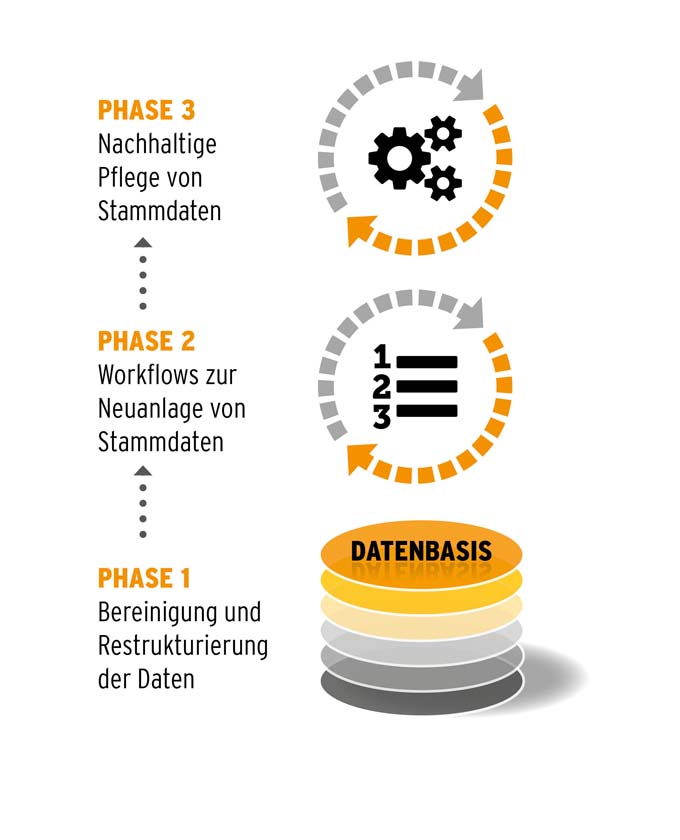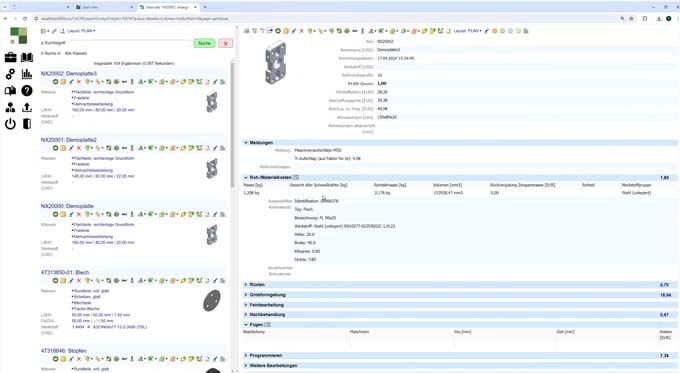3 steps to perfect material master data
Complete, comprehensive and up-to-date material master data is the success factor in automation, digitalization and ERP migration projects at industrial companies. But how do you achieve this? The specialists at simus systems provide the project methodology, software and basic rules and regulations that make the usual effort of cleansing, structuring, supplementing and updating data a thing of the past.
classification considerably.

Master data. (Image: simus systems GmbH)
The procedure is divided into three steps:
Step 1: Analyzing the database
To ensure that the first step is not the most difficult, simus systems starts by analyzing a sample of the existing data in a preliminary project. This can be in databases, ERP and PDM systems. The data is sorted and enriched by the powerful simus classmate software according to predefined rules and stored in a results database. The initial results are used to determine the objectives and costs of master data management.
Step 2: Rule-based optimization loops
In the second step, the entire database is systematically condensed, enriched and structured using integrated, customizable sets of rules. Simus classmate compares company data with standard classes of standard and purchased parts and, if required, suggests classes for the company-specific product range. The rule-based assignment of the data records produces correct results very quickly.
These results are further refined in workshops with the specialist departments concerned. Using the classmate Finder search engine, those involved in the project can filter and view the data to identify any errors, duplicates or inaccuracies. The basic rules are then adapted to the individual customer until an optimization loop delivers all the desired results.
Thanks to automation, large quantities of material masters are quickly and easily transformed in line with ERP and imported via interfaces. With this methodology and the best-practice rules, users and service providers save up to 80 percent of the usual effort.

parts inventory, avoid duplicates and reduce the search effort. (Image: simus systems GmbH)
Step 3: Ensure sustainable data quality
In the third step, the data quality achieved is secured. Authorized employees can find all desired data quickly and reliably with the classmate Finder. This reduces the search effort and protects against duplicates. It also sets up a binding material master creation process. Flexibly definable workflows automate the rule-compliant creation of material masters across departmental boundaries. Efficiency gains result from a high reuse rate of components, the standardization of purchased parts and lower administration and warehousing costs.
Source: www.symus-systems.com









